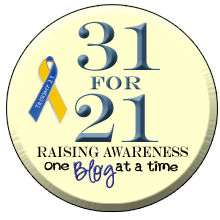When I was 14, I went to summer camp where we did week-long outdoor adventures. I signed up for one week camping, one week canoeing, and one week rock-climbing.
On the last day of the rock-climbing trip, I was about 30 feet up the cliff, with another 10 or so feet to go. The only way to get to the next ledge was to walk up a crack.
Walk up a crack?
The counselor who was belaying me coached me: "You put your fingers in the crack, lean back, and walk up the rock on the other side."
You do WHAT????
I put my fingers in the crack, and tentatively leaned back. No way. No how. No way in heck are my fingers going to hold up my weight. He's nuts.
"Put your feet on the rock in front of you!"
Um, no. I am not a spider, or an insect, or a squirrel. I do not walk up vertical surfaces. Just to prove to him that he is totally insane to suggest such a thing, I put my foot on the rock and "tried". I fell, and he broke my fall with the rope. I landed back on the ledge. "This is high enough, please just rappel me down!"
"No, you can do this. Put your feet up higher."
For an hour we were at an impasse. He coached me and encouraged me, and I stood there, paralyzed. I can't do this I can't do this I can't do this I can't....... He would not let me back out. We would be there all day. I was tired. I was embarrassed. I was hungry. I was sweaty. My sweaty fingers felt less and less able to do what he was telling me to do, over and over, patiently and insistently.
I put my fingers in the crack, put my feet up about waist high, and pushed back with my legs against my wedged hands. Hand-over-hand, foot-over-foot, up the vertical cliff:
 |
| (No, this is not me...) |
He was right. I
could do it. I just needed someone to belay me, coach me, and not let me give in to my fears.














